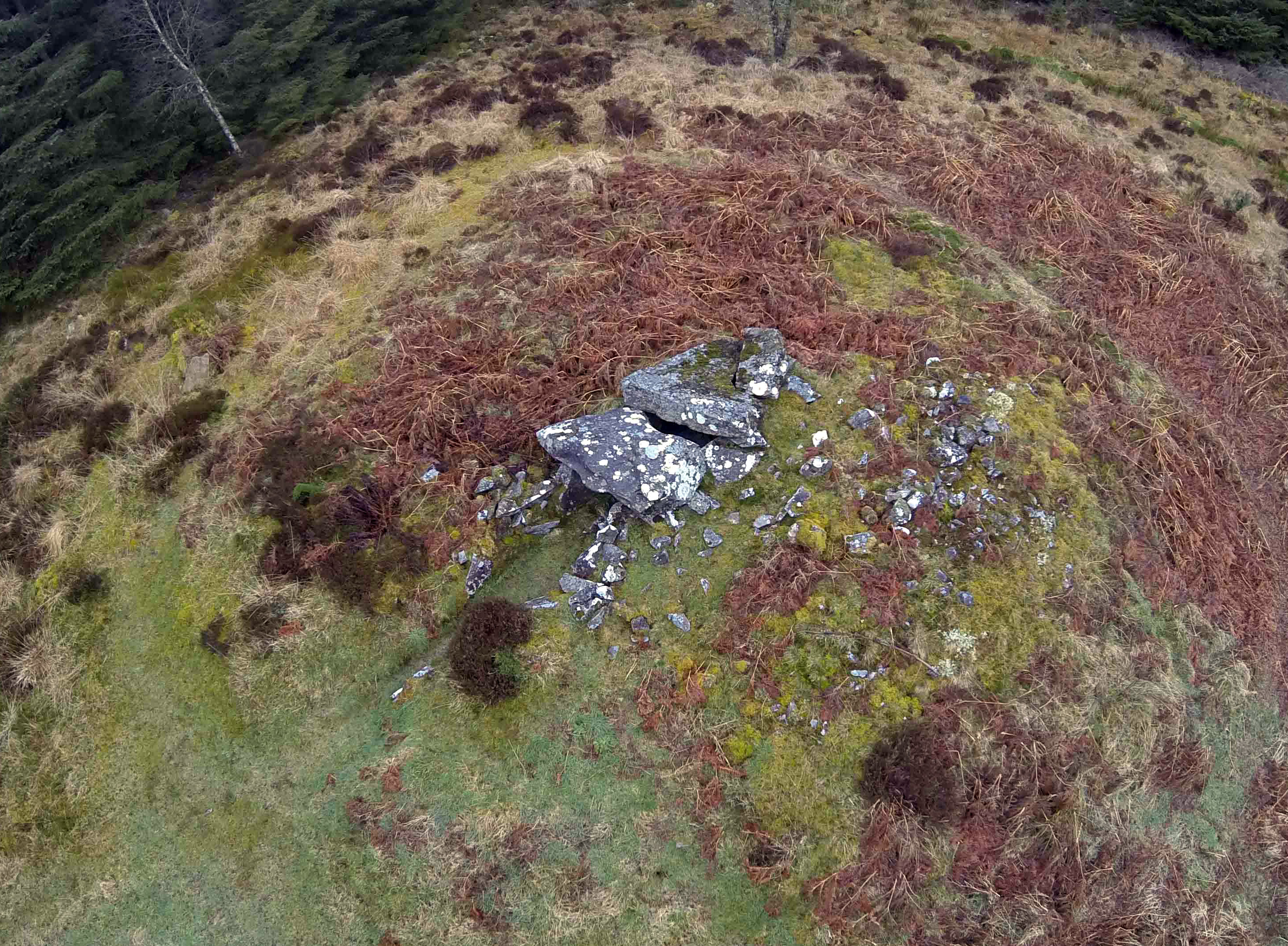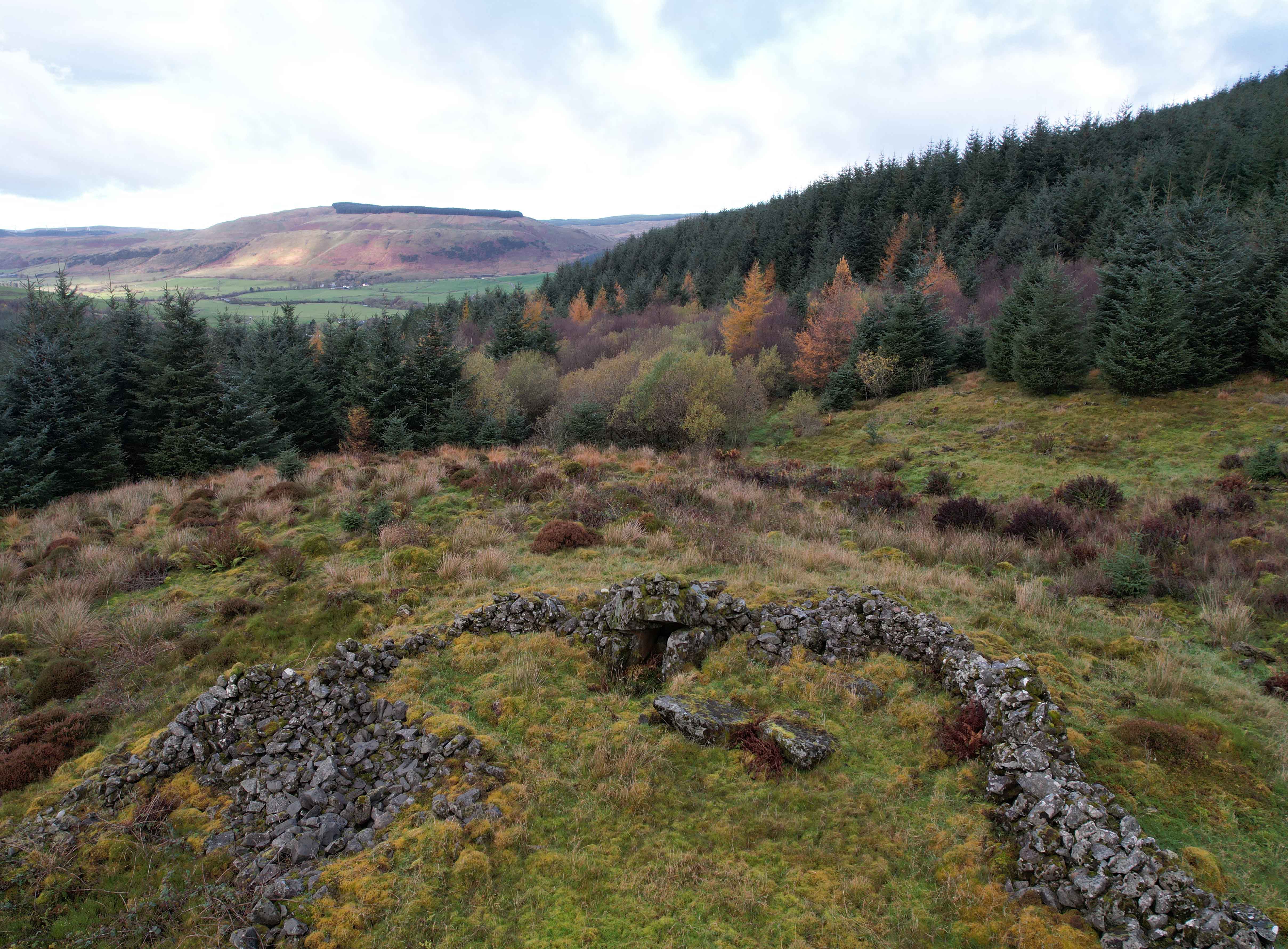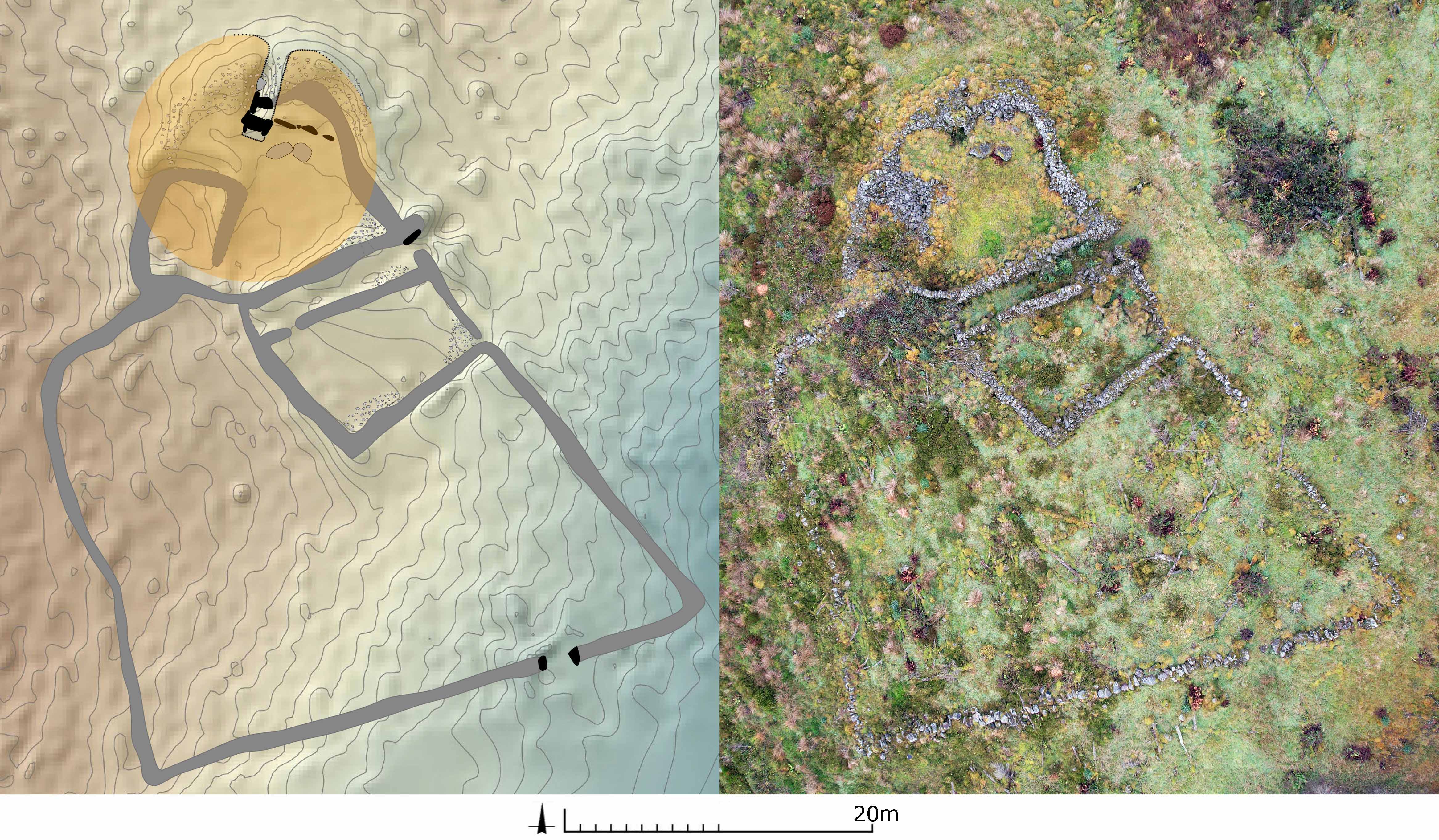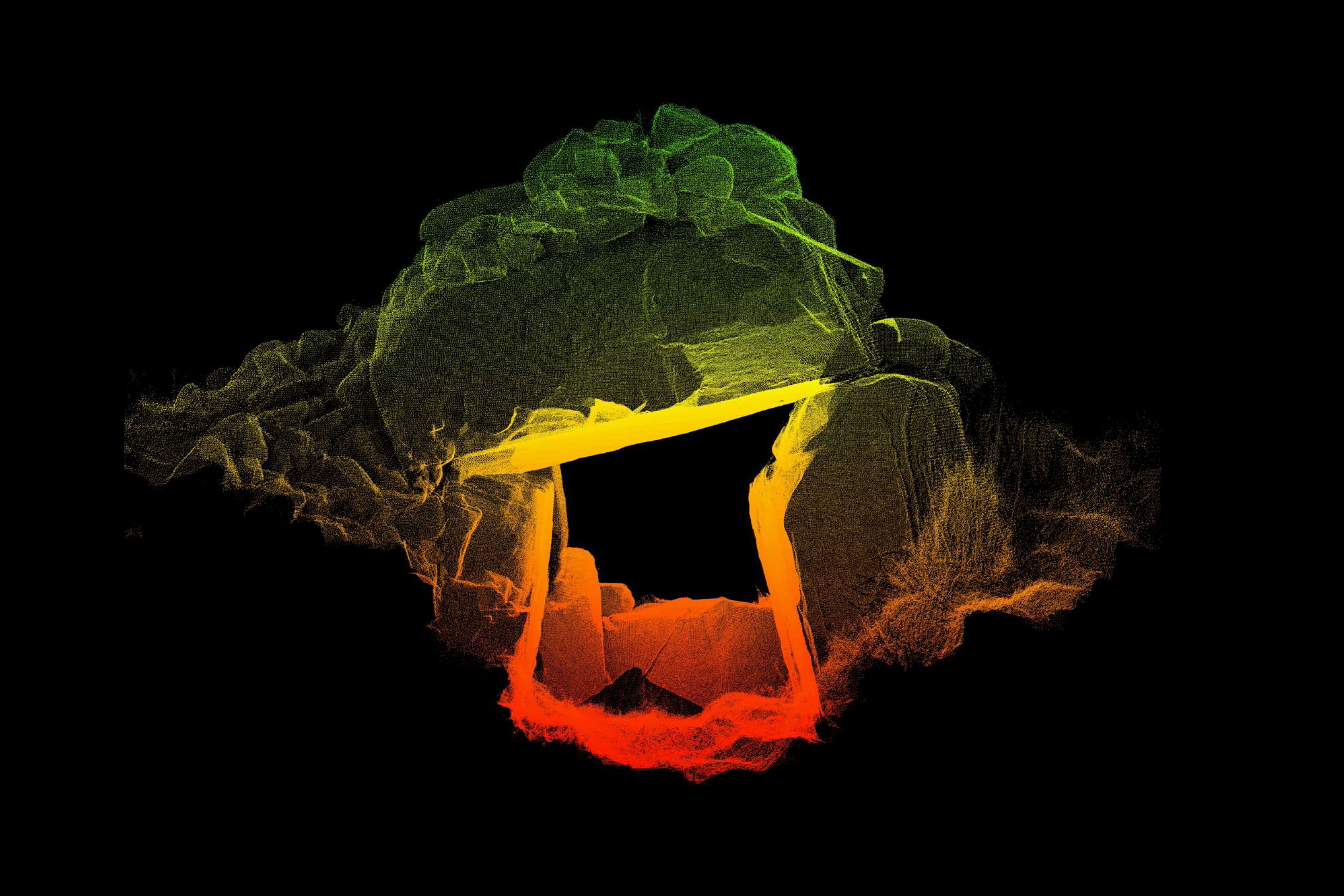Dig deeper: the Bare Bones of Bargrennan Cairns
To celebrate our archaeological learning resource The Bare Bones being nominated in the Current Archaeology Awards 2024 ‘Research Project of the Year’ category, we thought that we would shine a light on another intriguing type of Neolithic chambered cairn – the Bargrennan cairn.
Several of these cairns can be found on Scotland’s national forests and land, including the White Cairn in Galloway and the Bencallen Cairn in South Ayrshire.

The White Cairn of Bargrennan measures around 14 m in diameter and still stands about 1.4m in height. It’s passage and chamber are clearly visible.
The White Cairn of Bargrennan in Galloway was excavated by Professors Piggott and Powell in 1949. It’s the first site where the distinct ‘Bargrennan’ class of chambered cairn was recognised, and one of only a dozen of these cairns of this type to have survived. They are mostly found in Galloway.
A typical Bargrennan cairn is circular on plan and contains at least one simple passage and chamber. They have similarities to the Clyde cairns and court tombs of the North Channel, with their rectangular chambers, but are covered by circular cairns rather than trapezoidal ones, and lack the famous curving façade. However, they may not be contemporary traditions; while the chambered cairns of the north Channel are early Neolithic in date, the Bargrennan cairns may be late Neolithic in date. They are also usually found in isolated upland basins, while Clyde cairns and court tombs are usually located in the lower lying coastal zone, often with views of the sea.

The Bencallen Cairn has been extensively robbed to build a later sheepfold. It may have measured around 16 m in diameter. Its passage is choked with rubble and the rear of its chamber has been destroyed.
The White Cairn has a passage that gradually widens from the threshold towards the back of the chamber. However, only two massive lintel stones remain in place today. The Bencallen Cairn is located further to the north, in South Ayrshire. It has been badly damaged, with much of its stone cairn removed to build a later sheepfold. It has fine views towards the Stinchar Valley.
The White Cairn and the Bencallen Cairn both help to demonstrate the conservation narrative at the heart of The Bare Bones. The passage and chamber of the White Cairn have been cleared, and the cairn is accessible and presented to the public. The Bencallen Cairn has been largely robbed away to build a more recent sheepfold. Only part of its chamber remains visible, and the outline of its circular covering cairn is only visible from the air.
Exploring the conservation narrative of these monuments can help us better understand and appreciate these silent stones from a time long since passed.
In recent years, new methods of digital documentation have added powerful tools to the archaeological arsenal. In the case of chambered cairns, photogrammetry and 3D laser-scanning technologies represent detailed methods of objective recording which can be used to better appreciate the scale and form of these monuments. These new techniques provided a rich seam of illustrations for The Bare Bones, complementing drone photography, archaeological measured drawings, and a host of new imaginative visualisations. There have never before been so many ways to present the past in such vivid detail.

This topographic plan and vertical aerial photograph of the Bencallen Cairn and later sheepfold has been annotated in orange to show the approximate extent of the round cairn, and its narrow passage widening into the chamber. Two possible lintel slabs or orthostats can be seen lying just to the SE.

This view of the point cloud resulting from an archaeological laser scan survey of the Bencallen cairn in 2015 looks under the massive lintel stone into the rear of the chamber; you can see the low sill stone that separates the chamber from the passage.
The Bargrennan cairns, with their round covering cairns, rectangular chambers, simple passages and, in some examples, their multiple radial chambers, display striking architectural similarities with similar round cairns on Arran, the Isle of Man and in North Wales: another regional tradition, this time shared by Neolithic and Early Bronze Age communities across the Irish Sea.
You can vote for this year’s Current Archaeology research project below:
- Wildlife management innovation challenge reaches next stage
- Giant glasshouse to grow trees for future forests
- Dig deeper: brochs and biodiversity